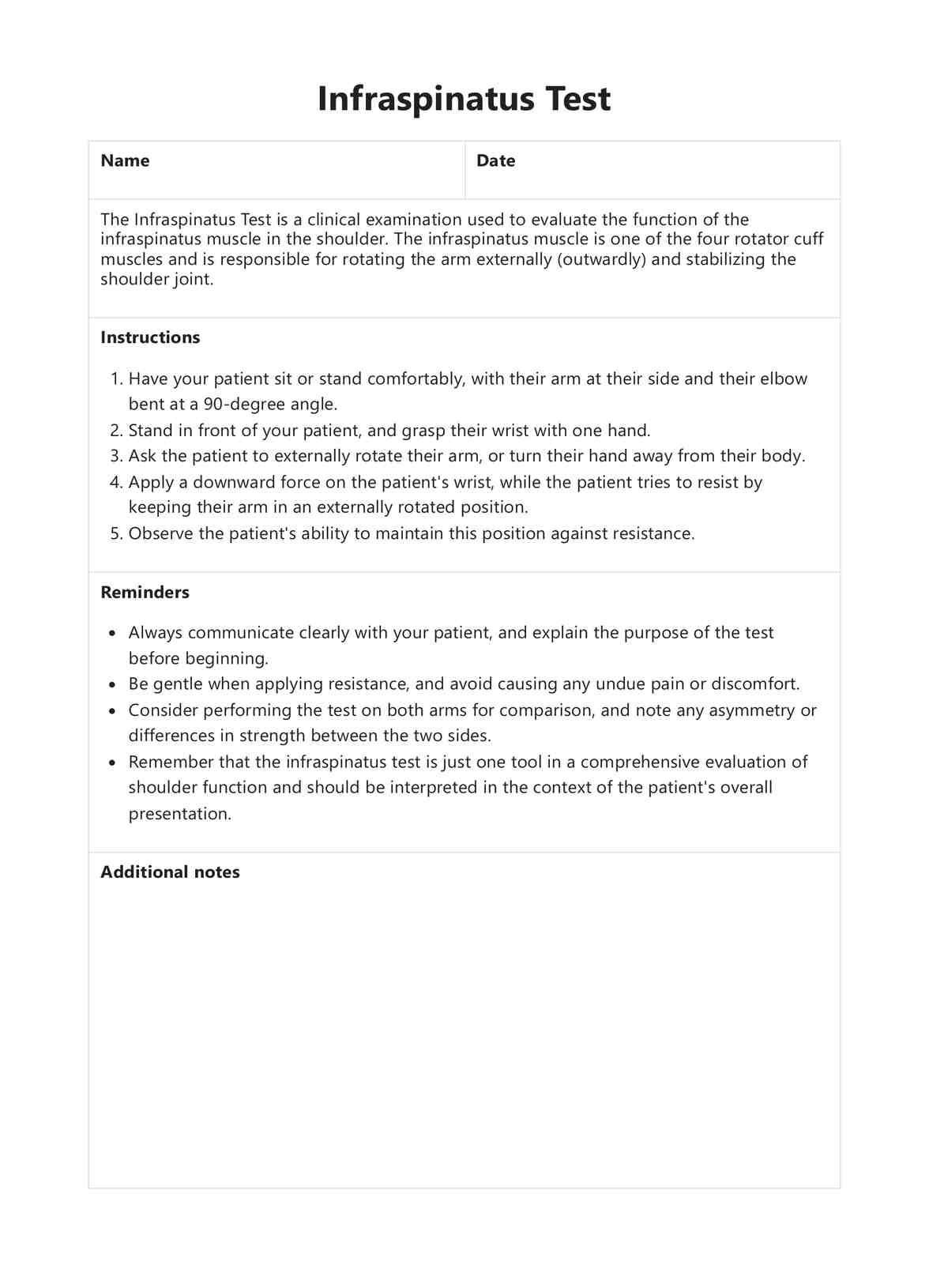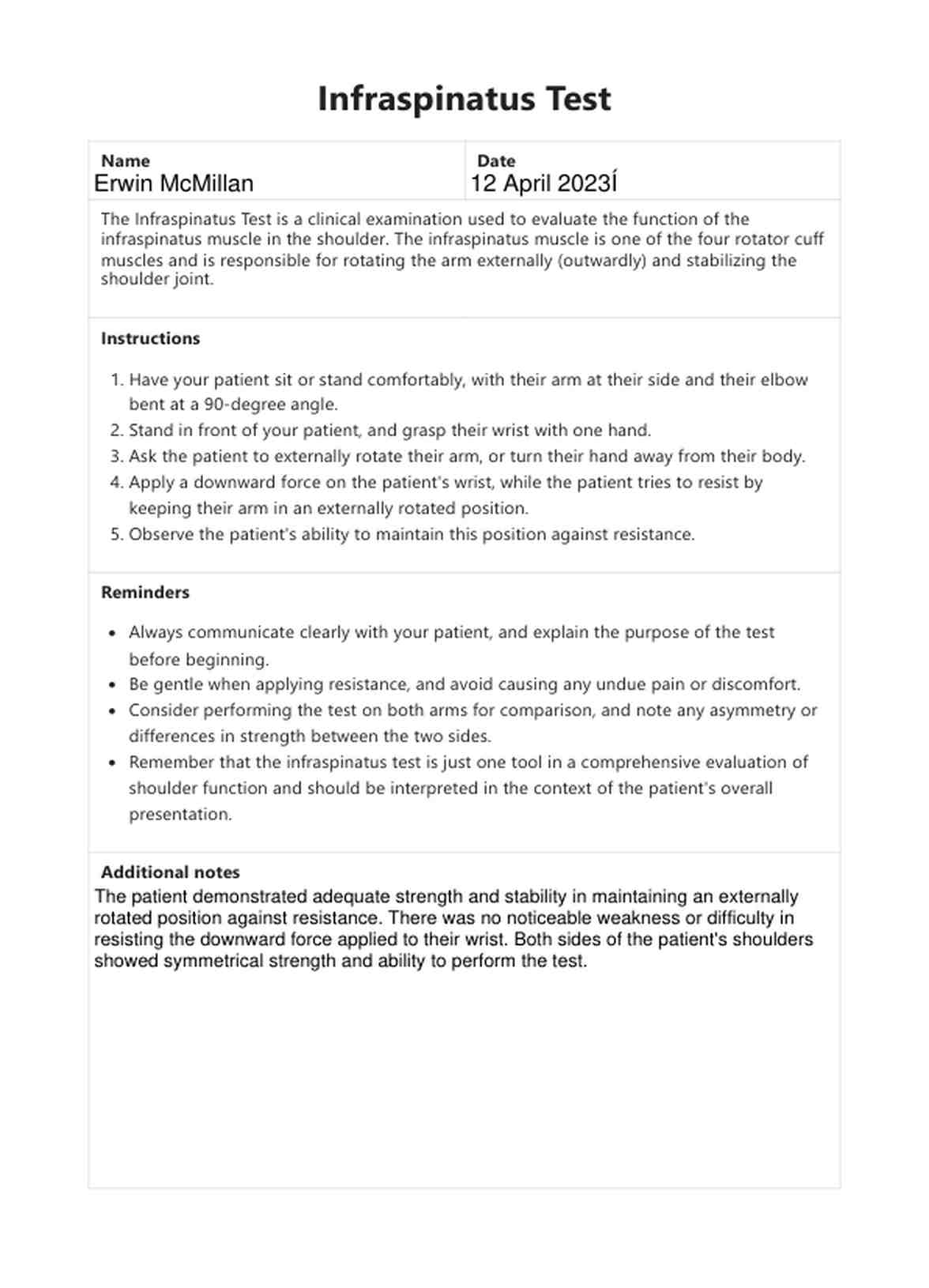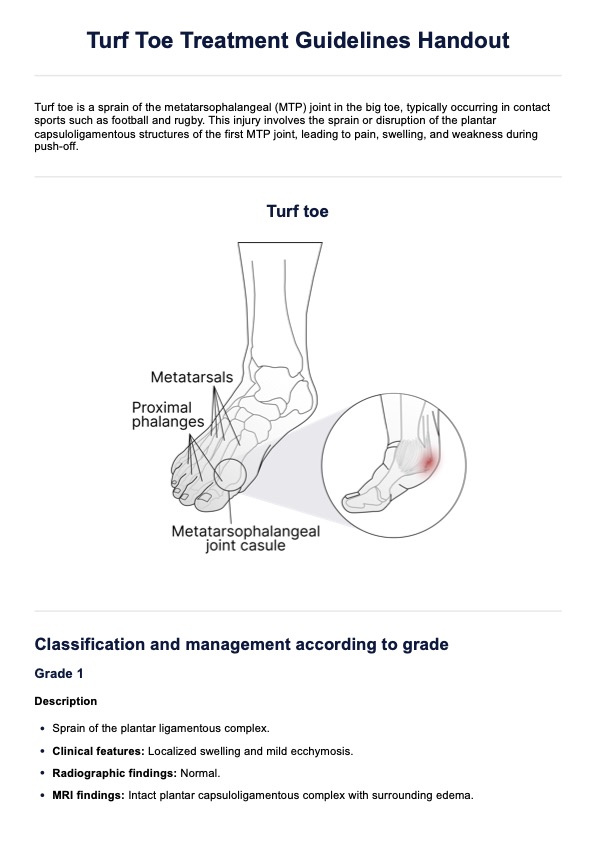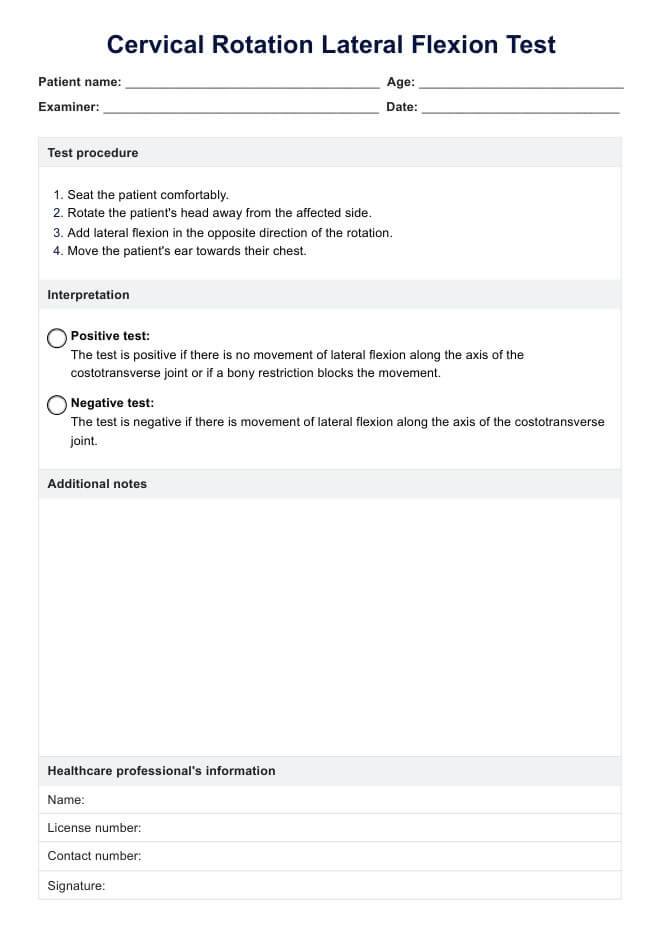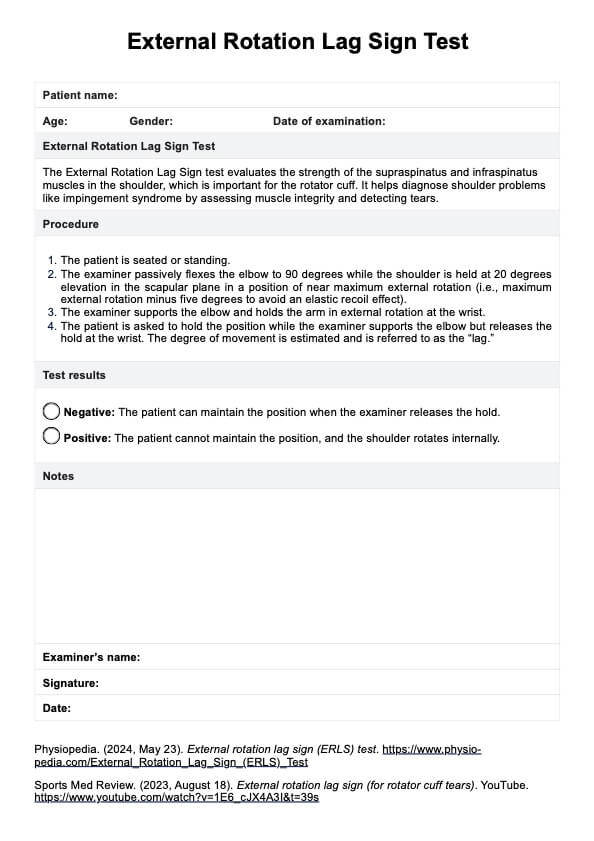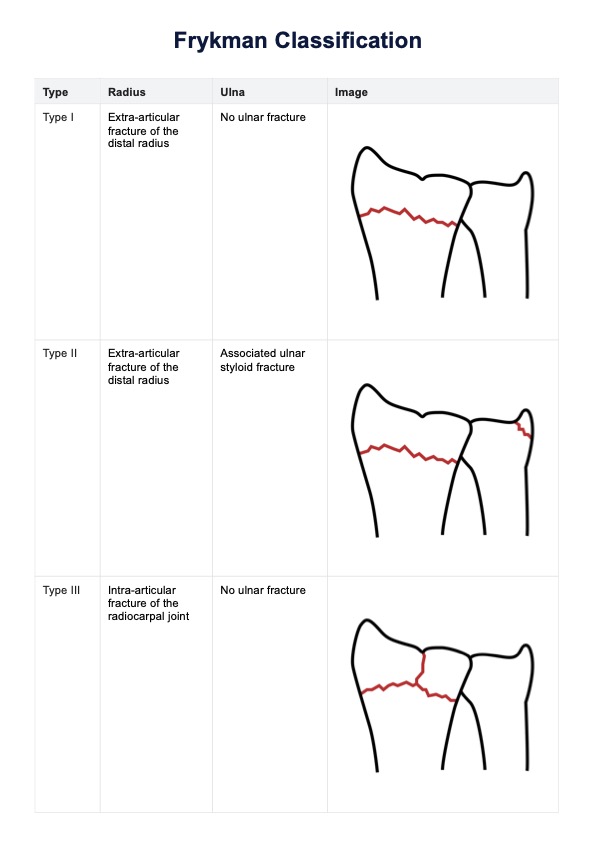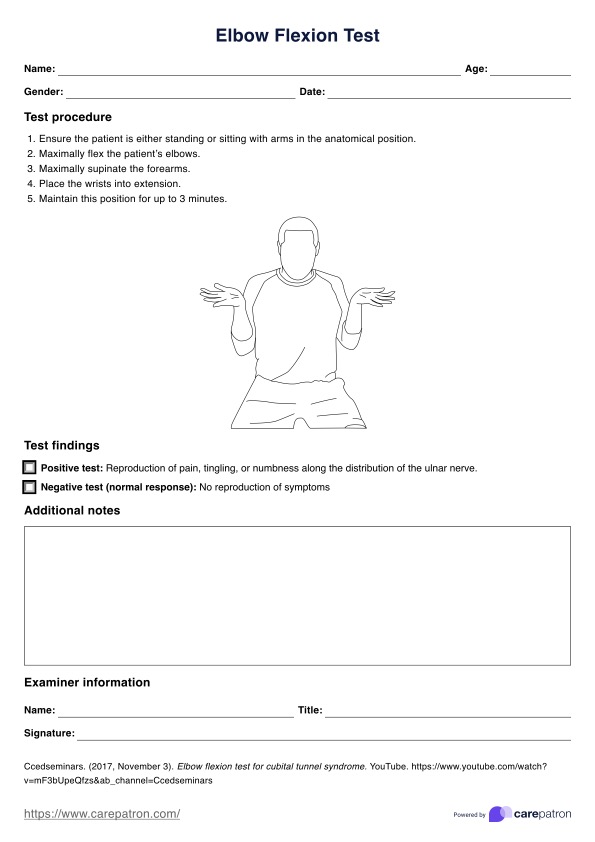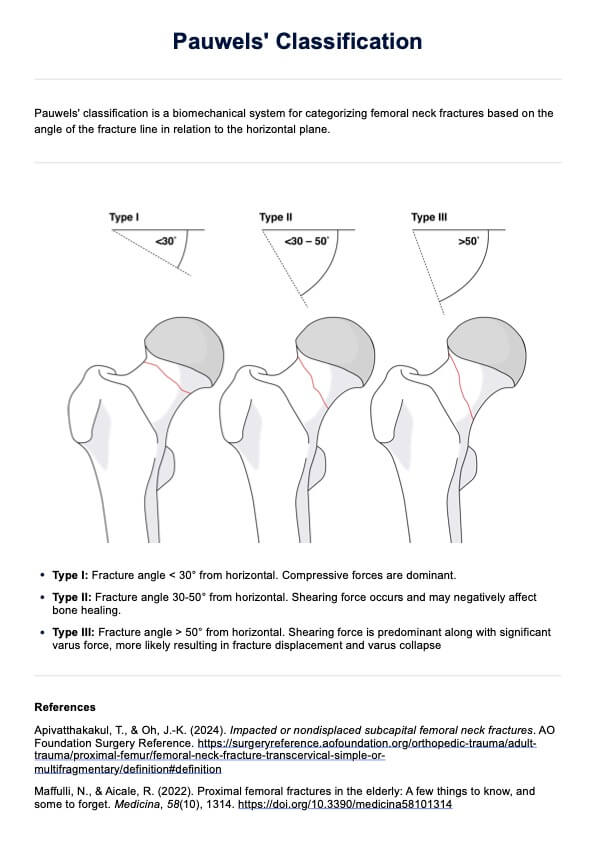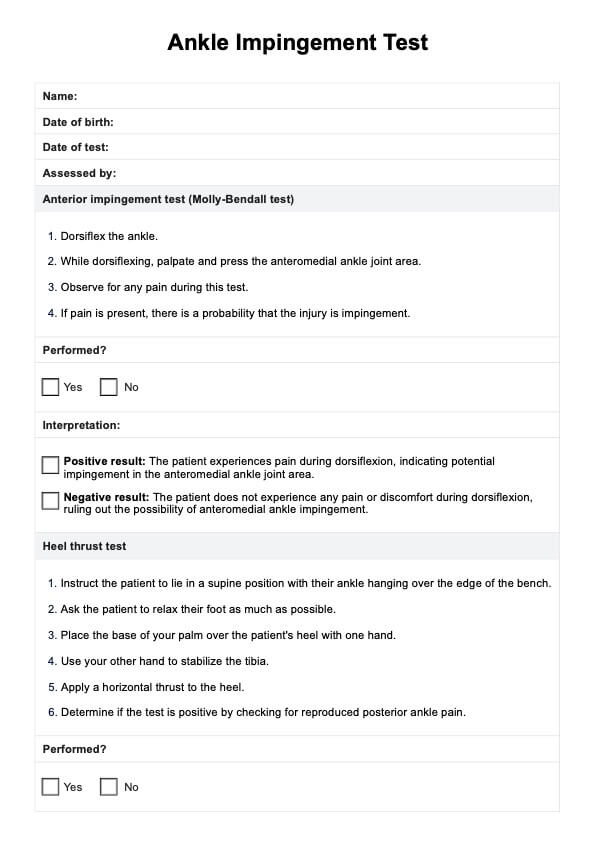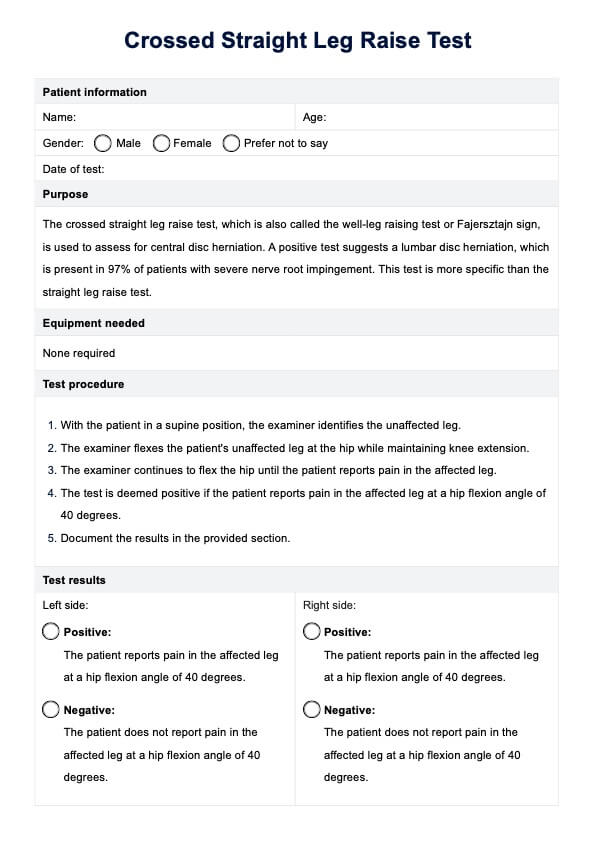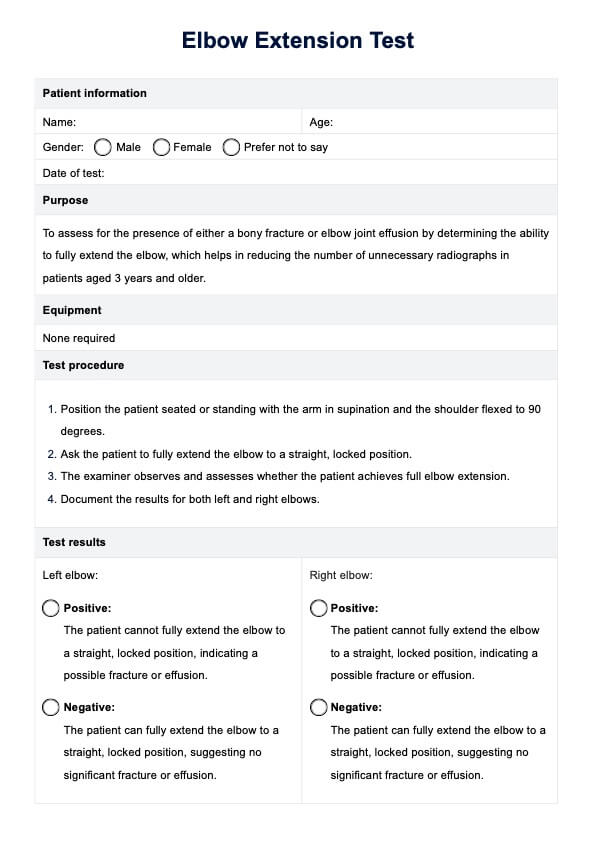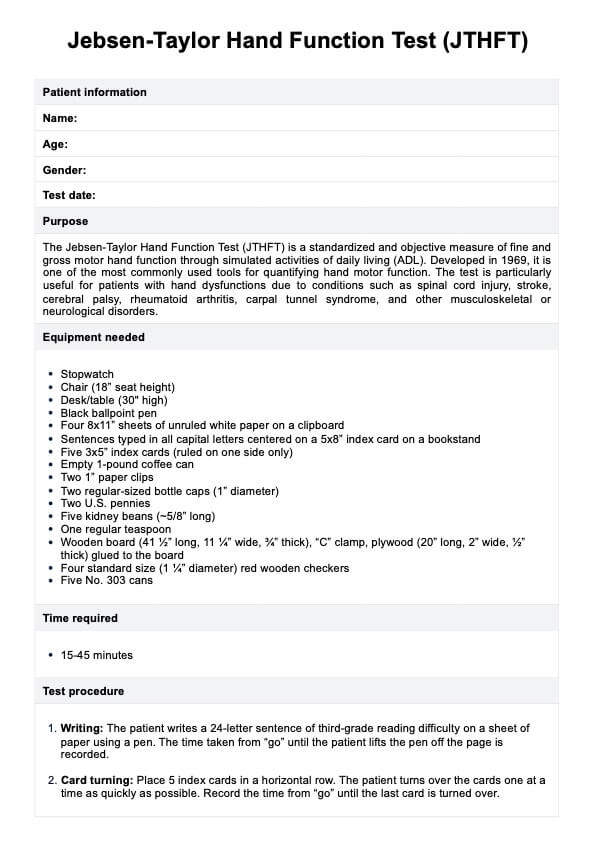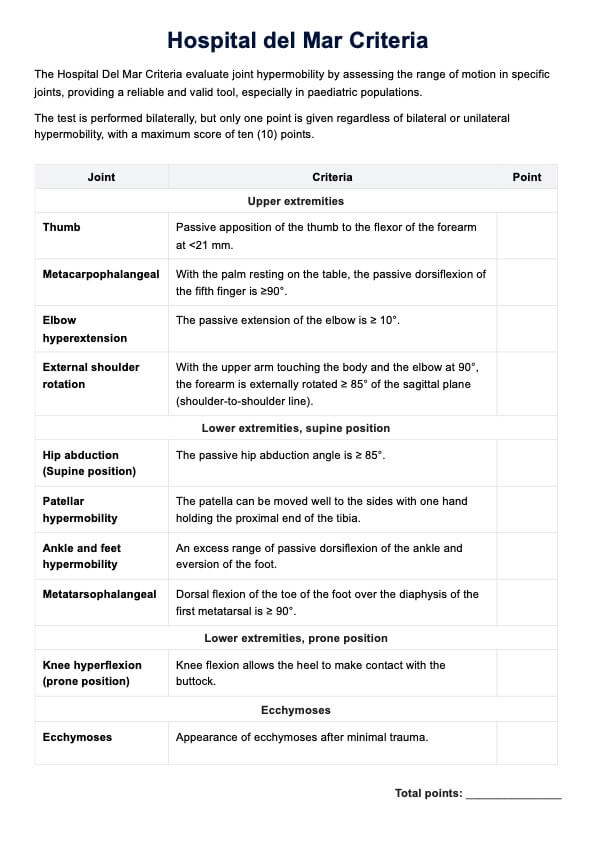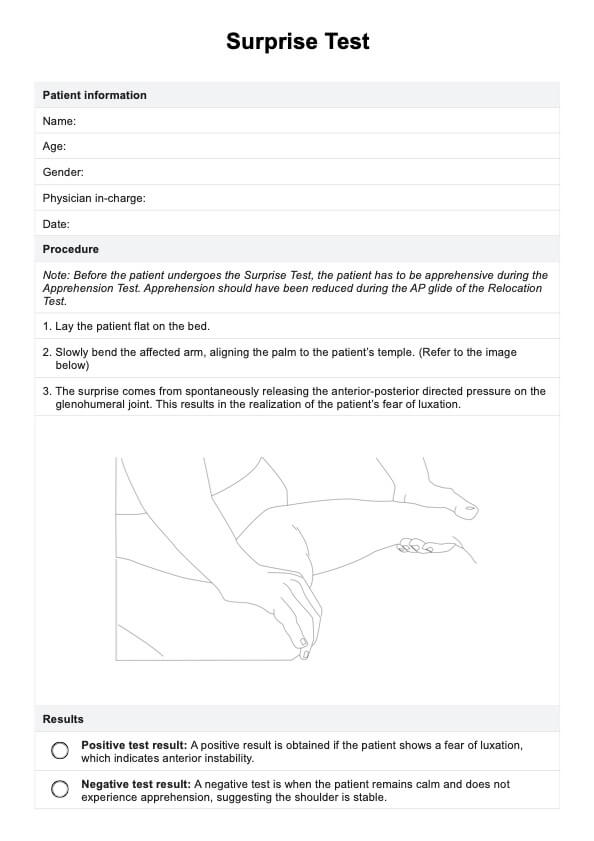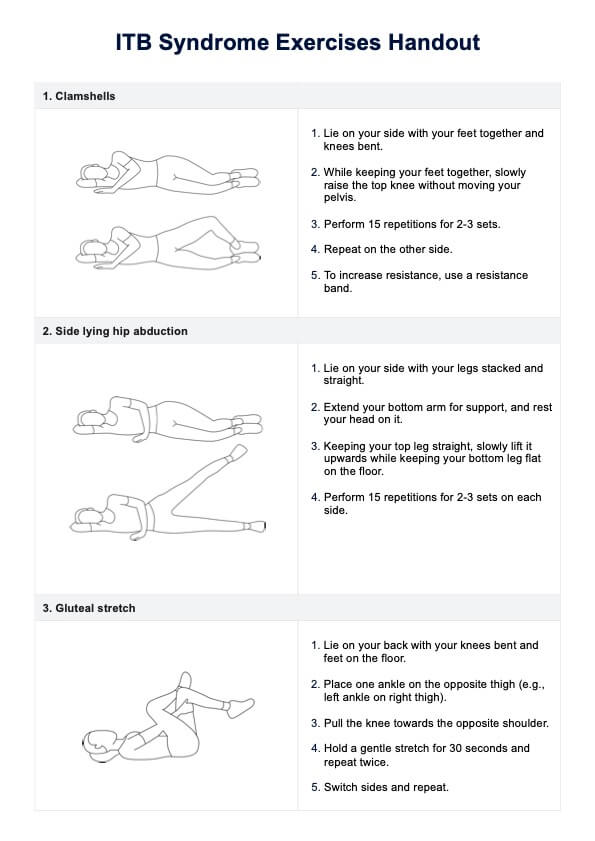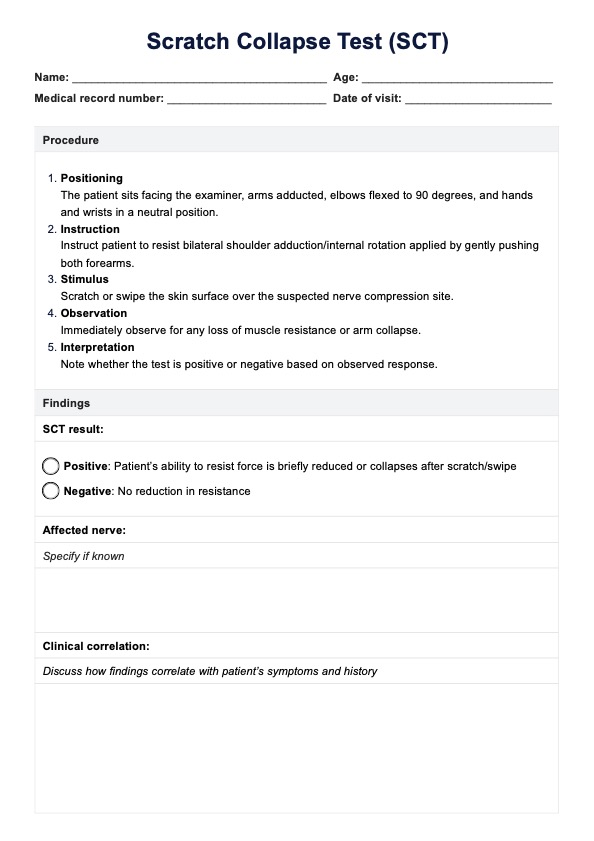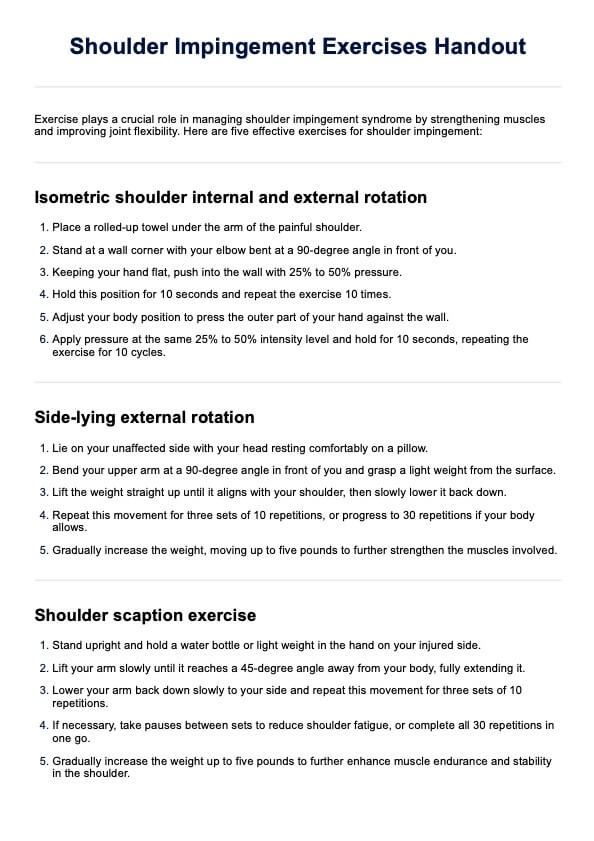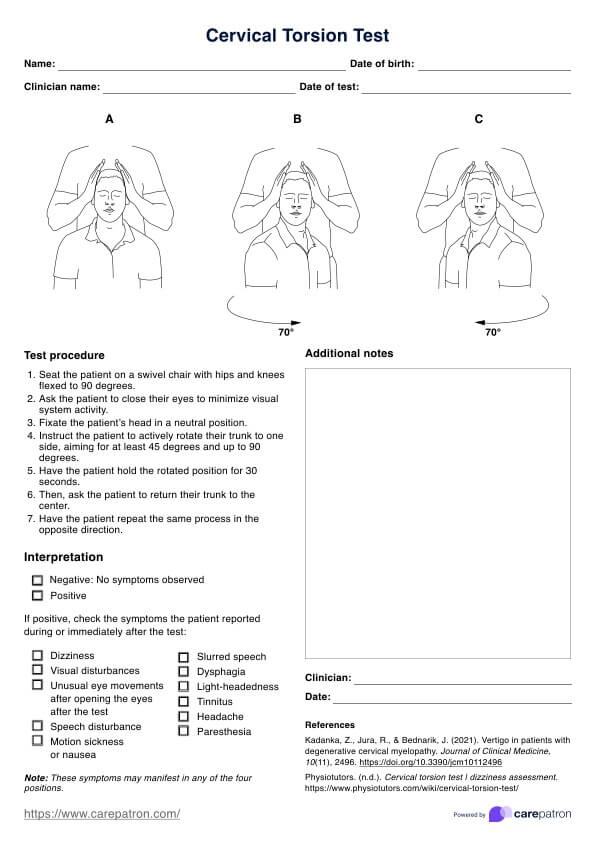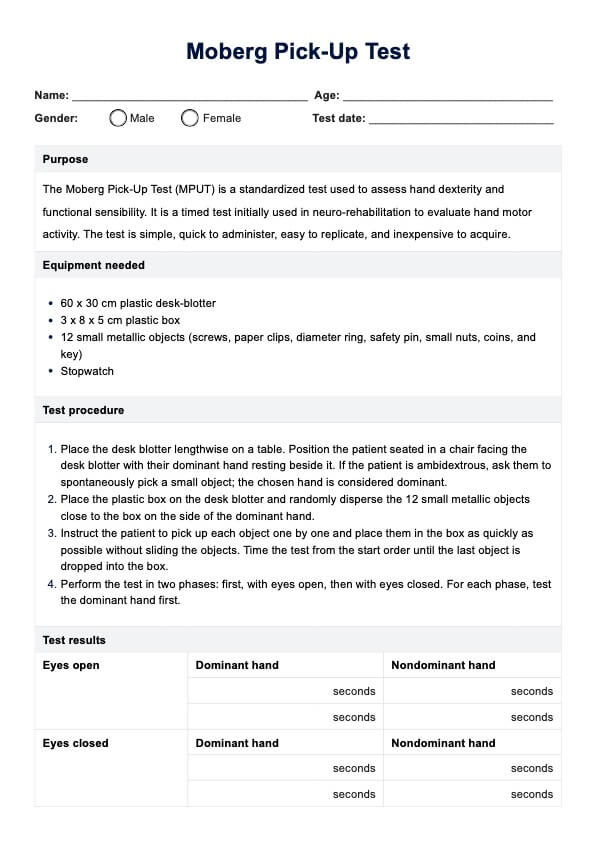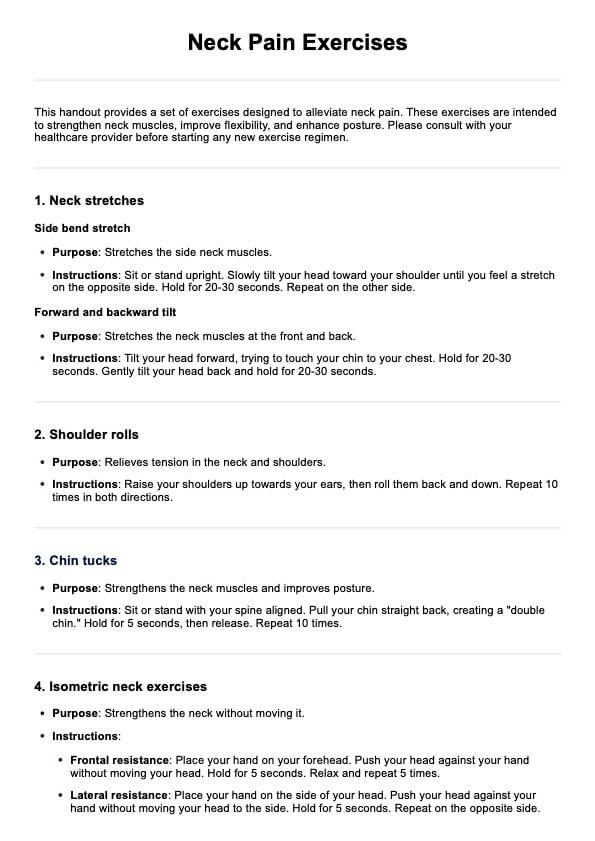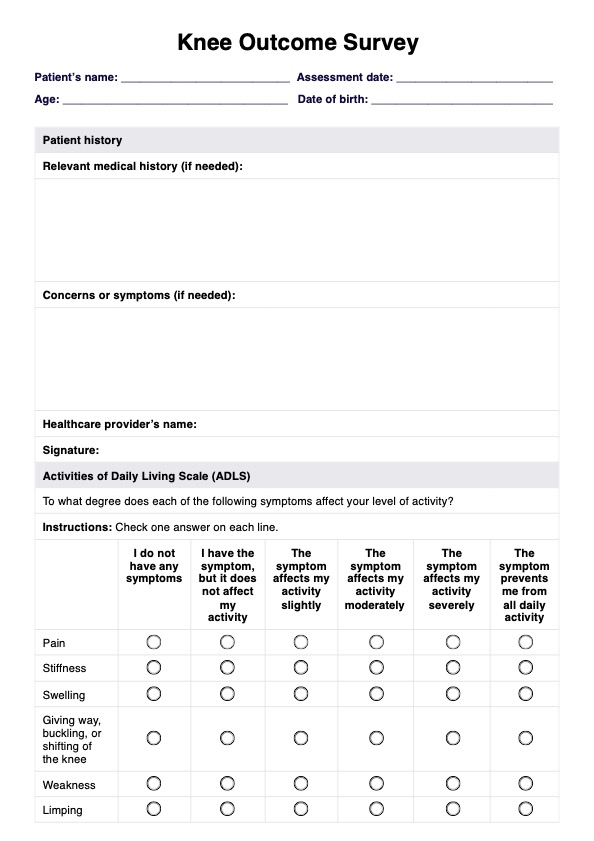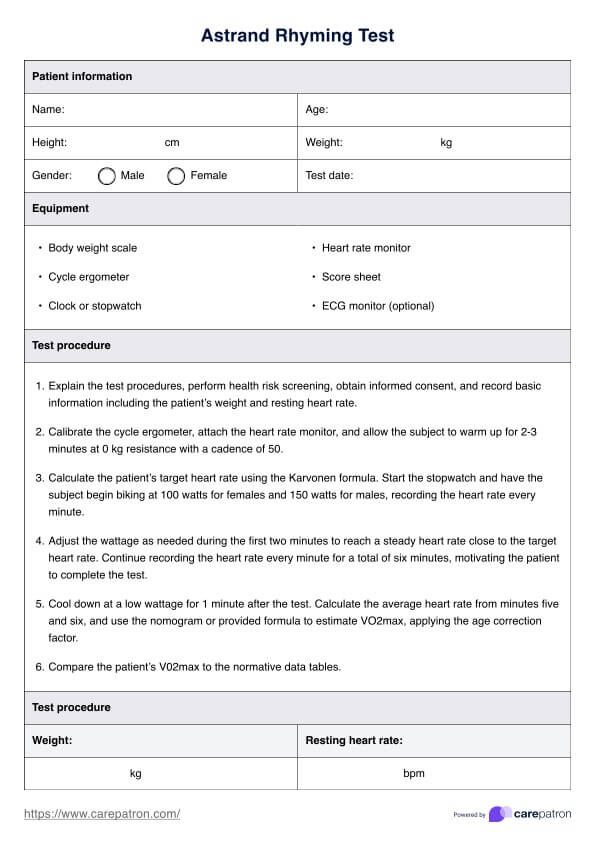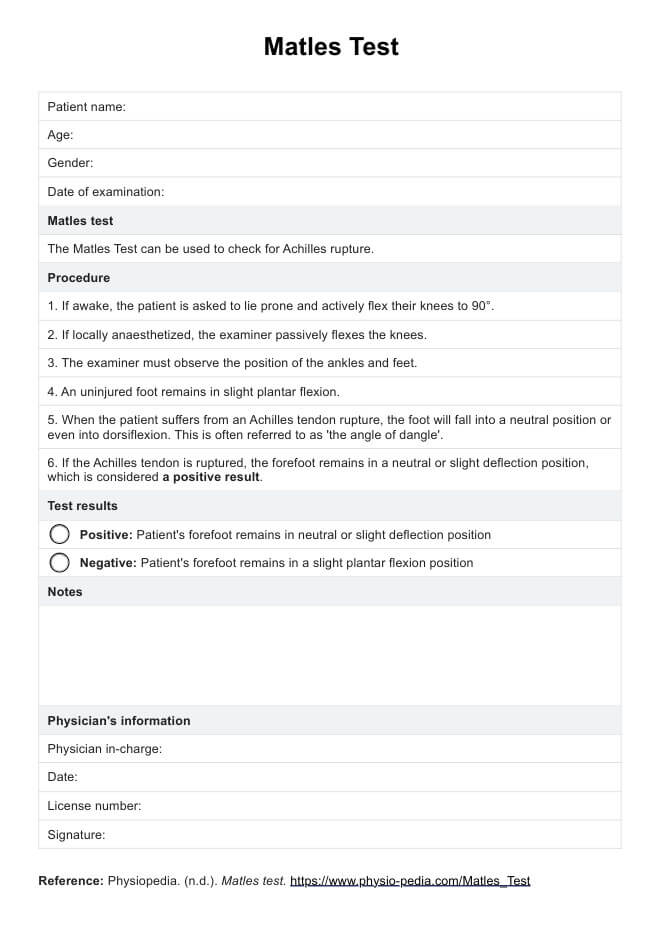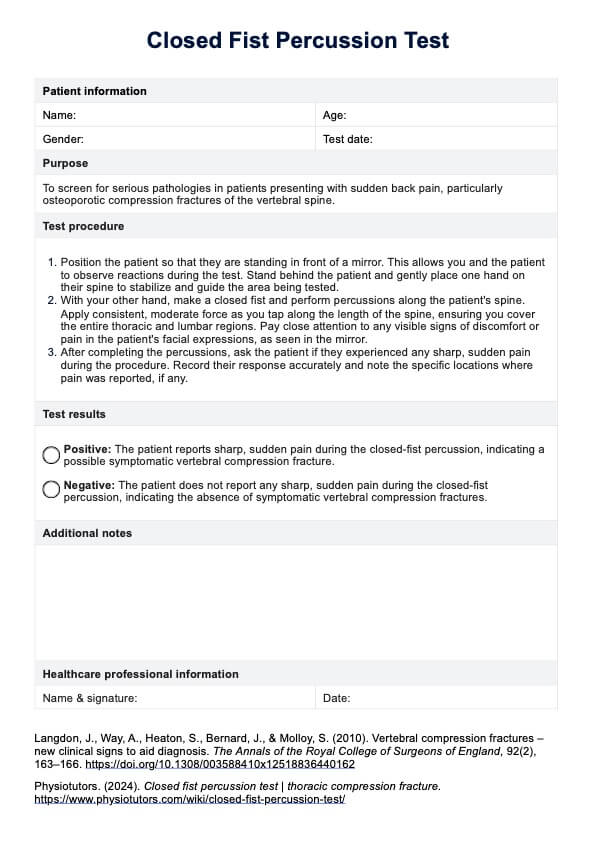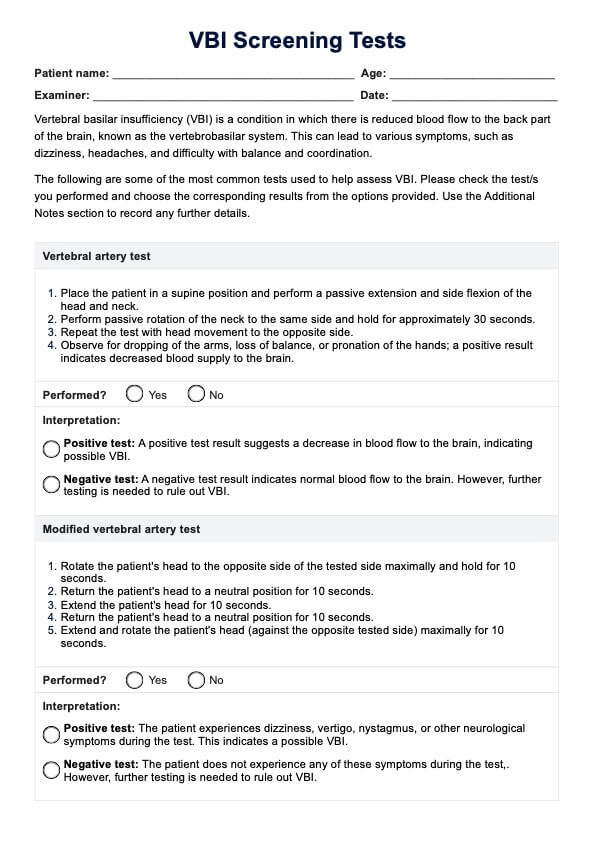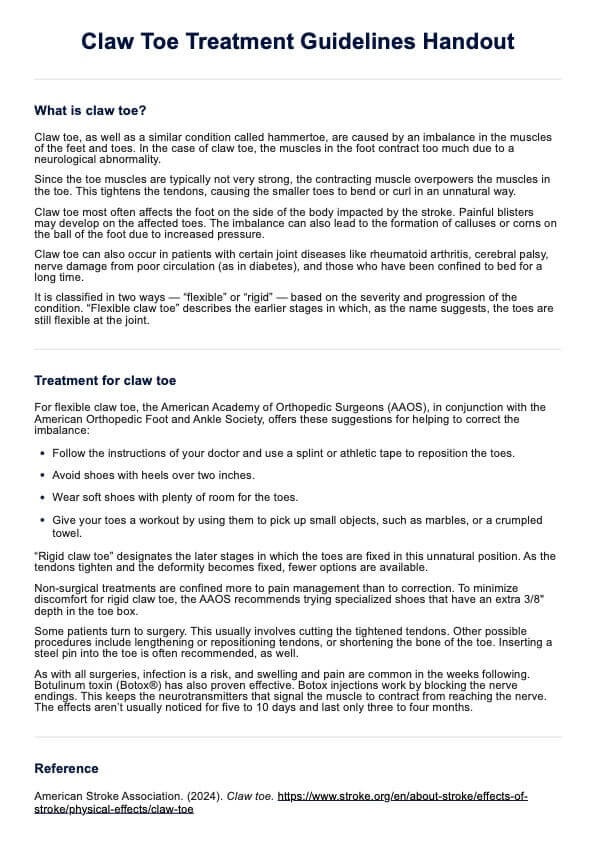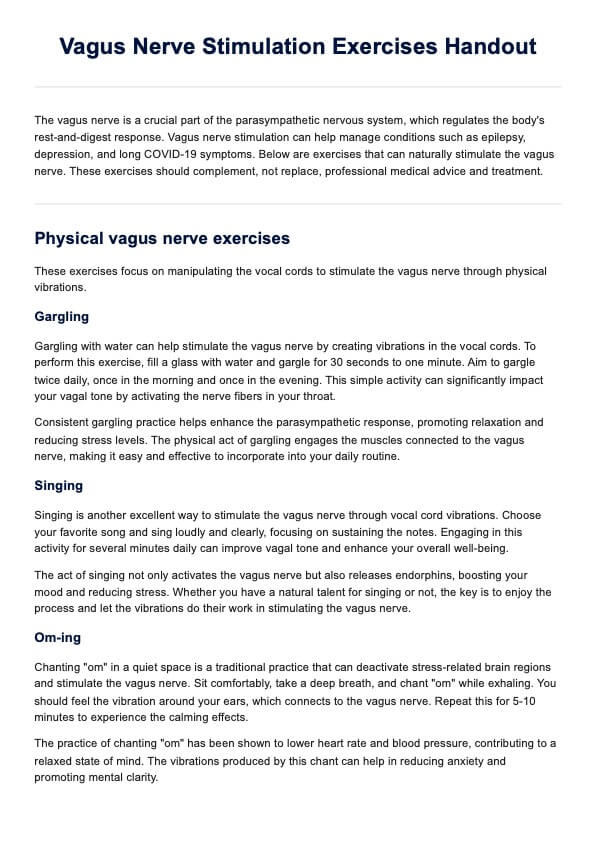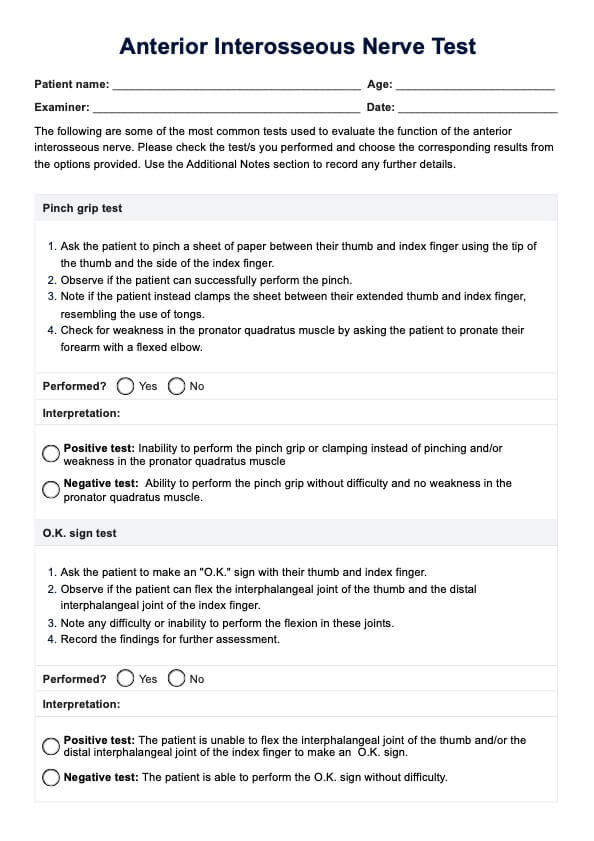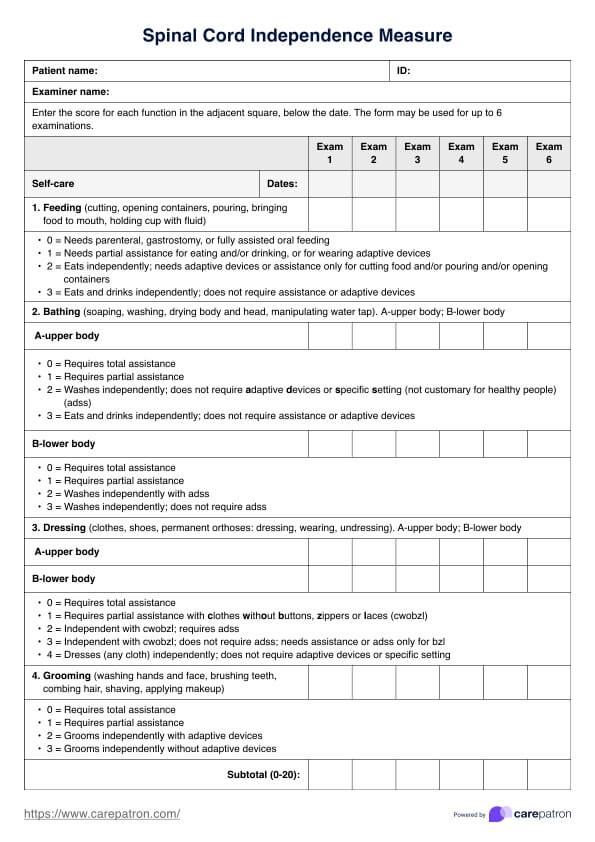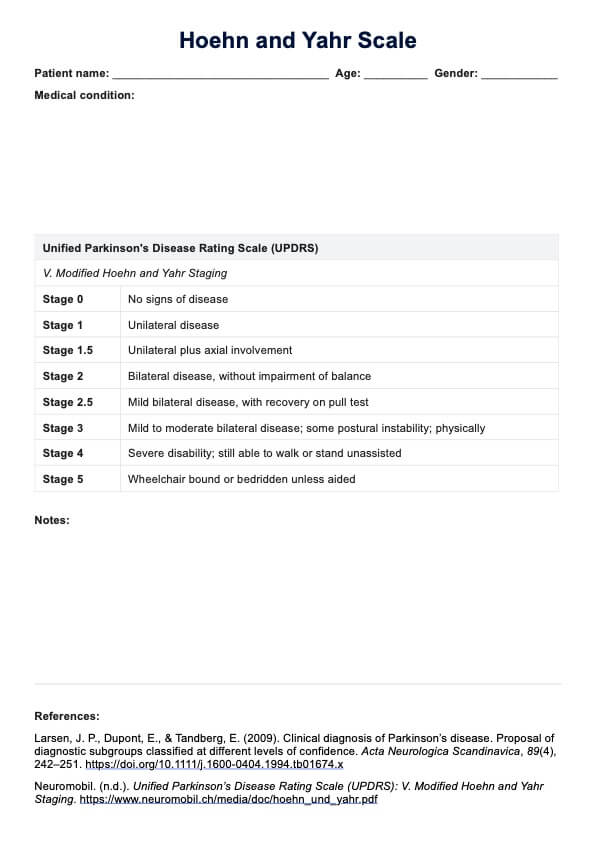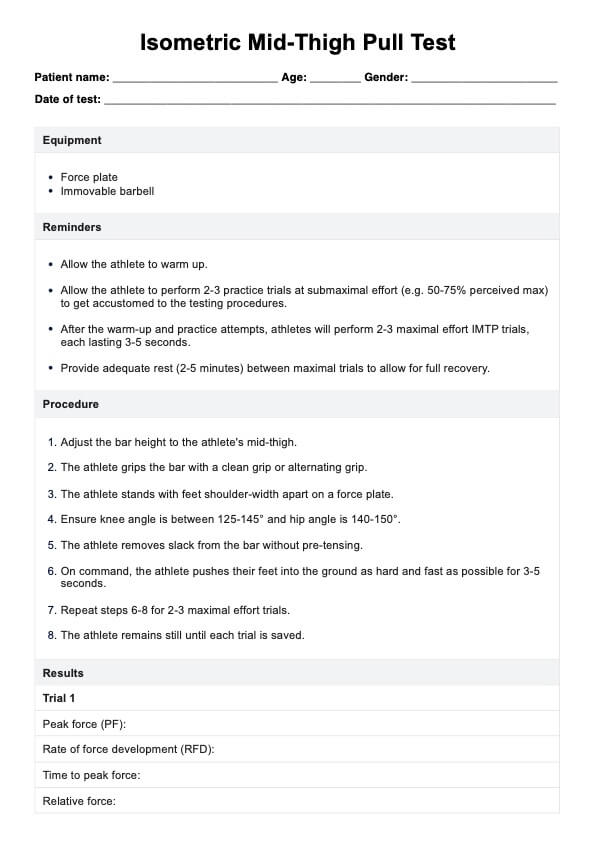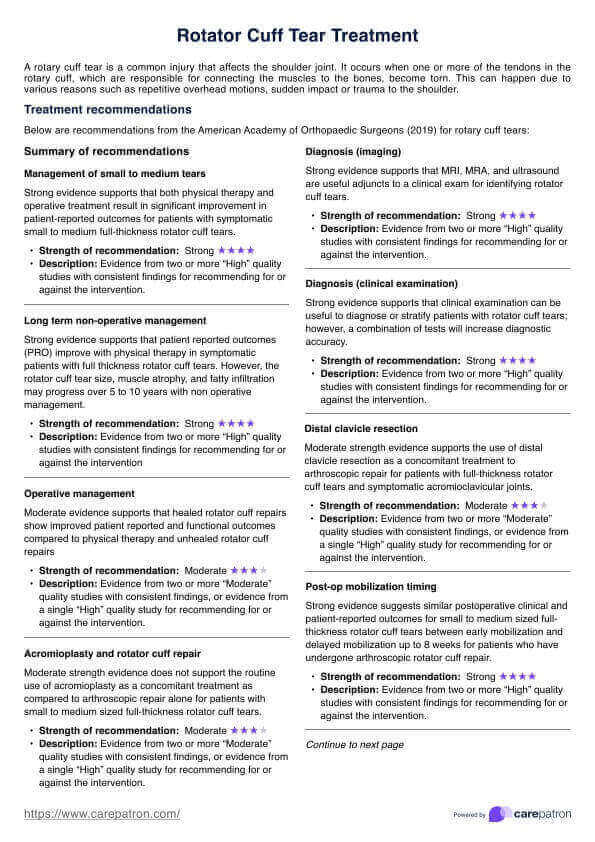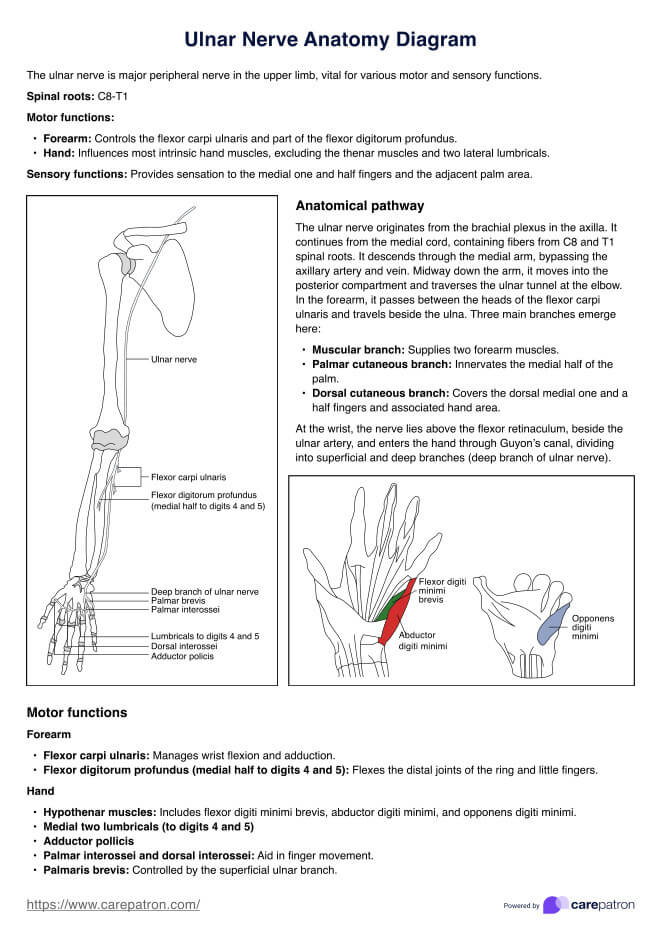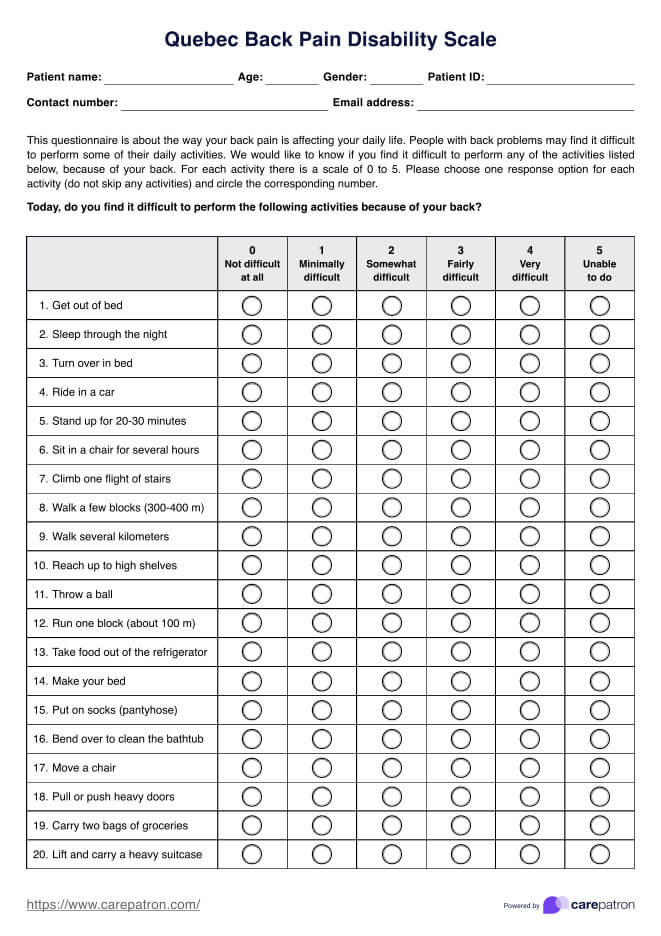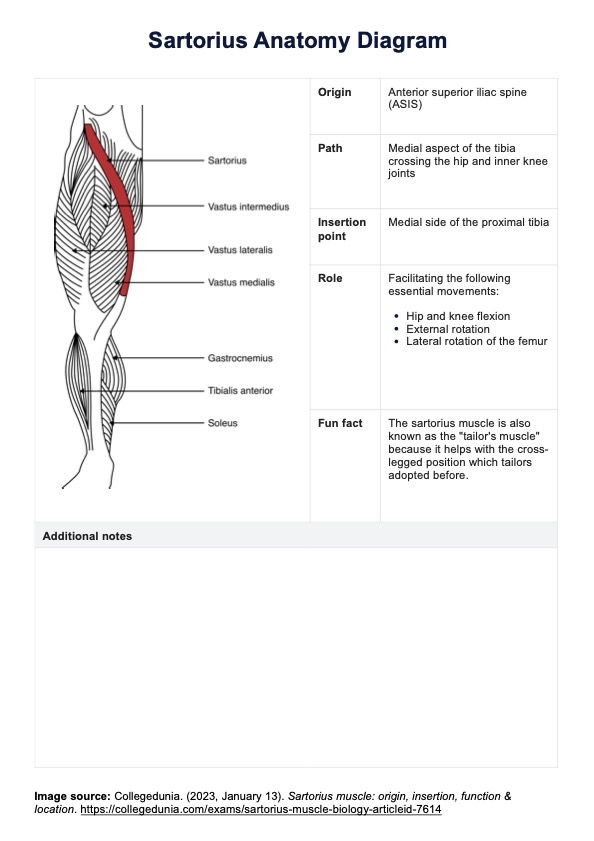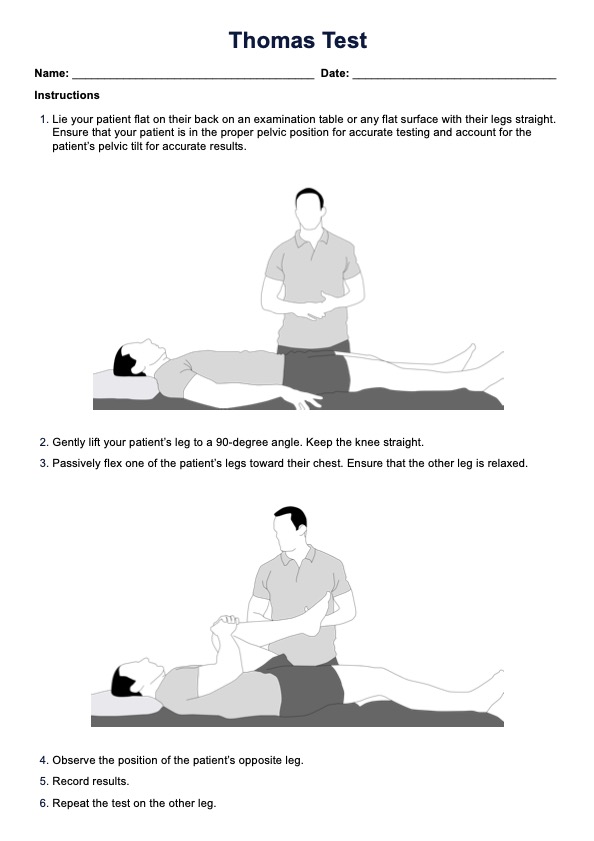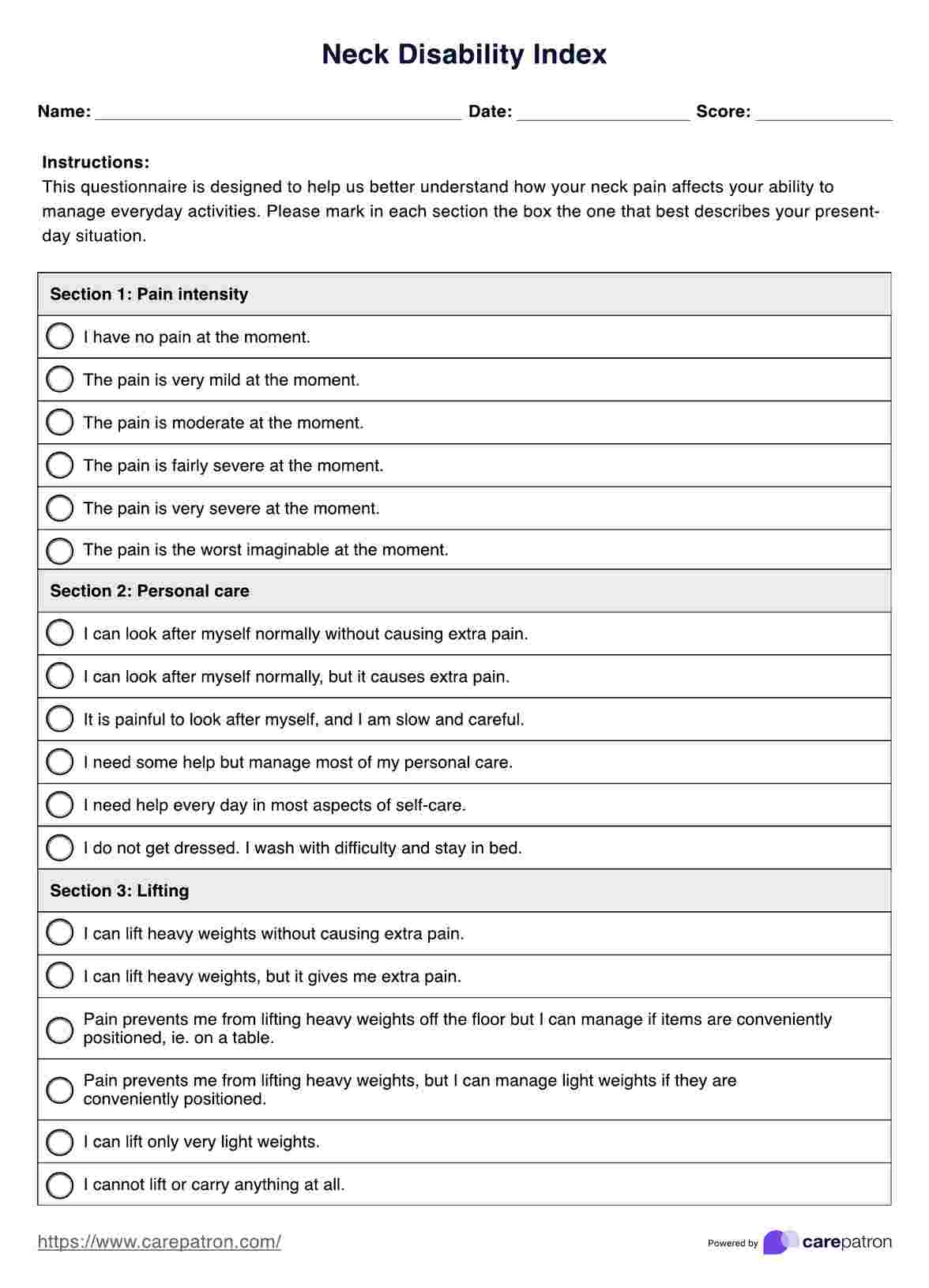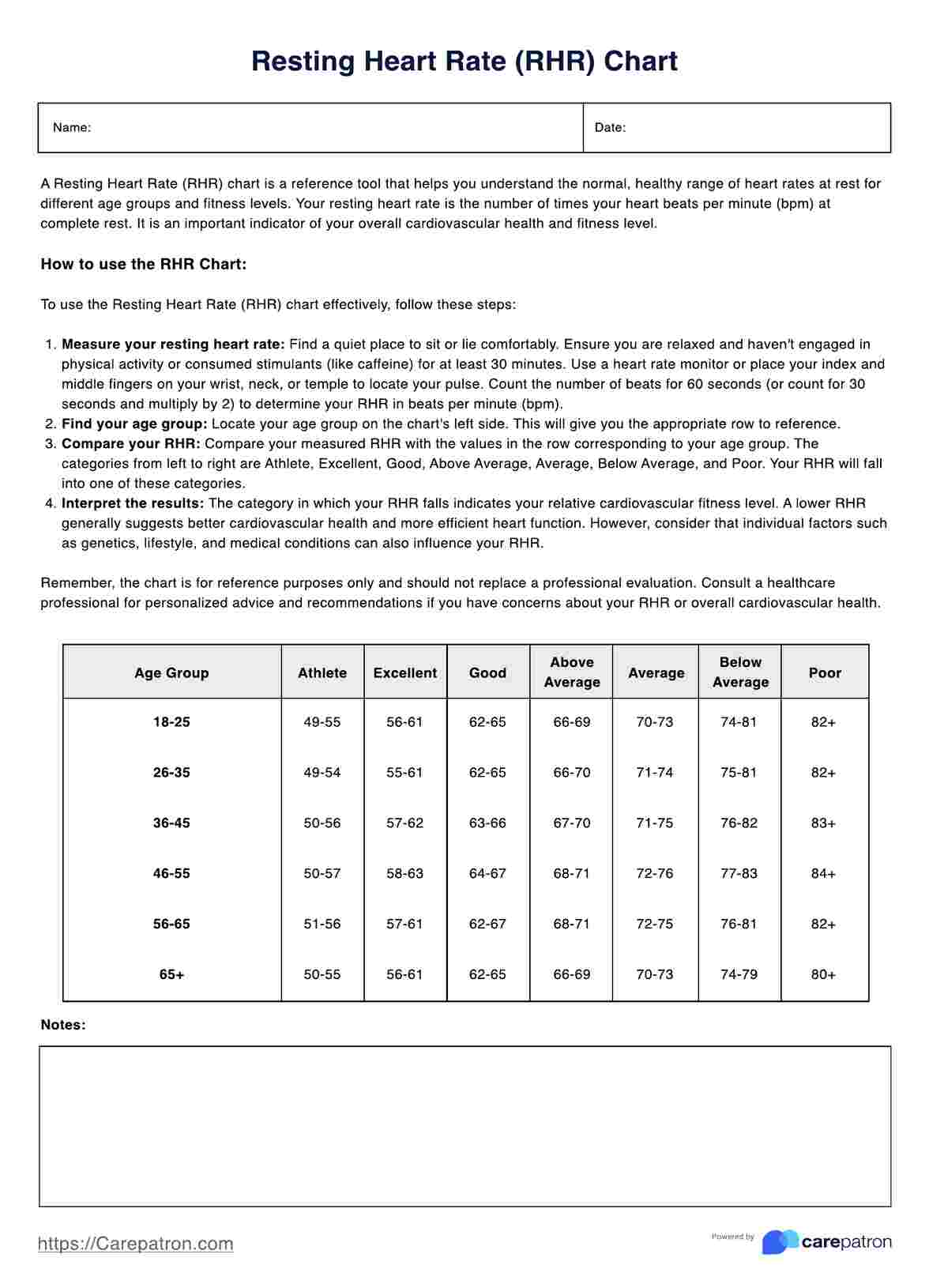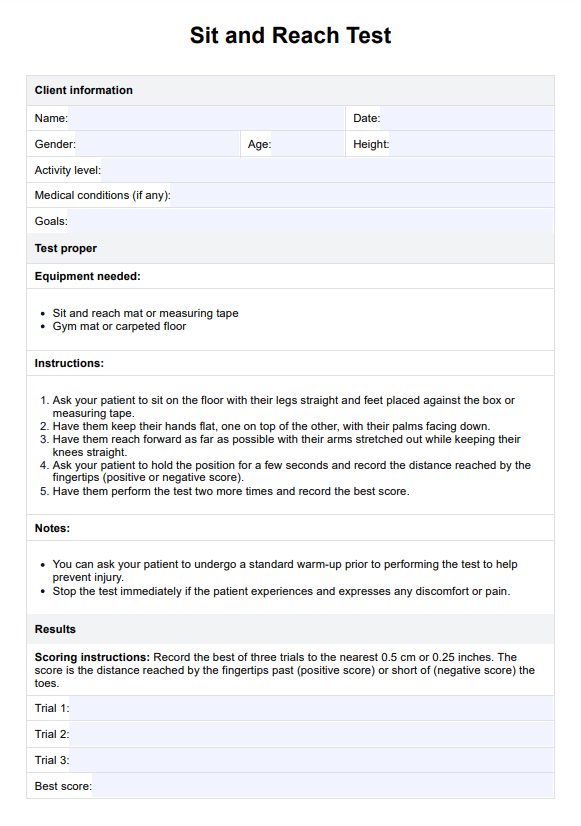Infraspinatus Test
Learn about the Infraspinatus Test, a physical examination for shoulder injuries. Get access to a free template to assess your patient's shoulder accurately.


What is an Infraspinatus Test?
The infraspinatus is a large triangular muscle located in the posterior aspect of the shoulder. It originates on the scapula, just below the spine of the scapula, and inserts onto the greater tubercle of the humerus. The infraspinatus is one of four muscles that make up the rotator cuff, which provides stability to the shoulder joint.
This muscle aid in abduction, external rotation, and arm extension at the shoulder. It also helps keep the humeral head from dislocating out of its socket. The infraspinatus is often referred to as the "backstop" muscle because of its role in preventing shoulder dislocation. Athletes tend to injure this muscle, which can cause significant discomfort.
A physical therapist or doctor may use the Infraspinatus Test to assess this muscle's strength, flexibility, and range of motion. This exam also measures the patient's ability to externally rotate and abduct the arm. With the test having a 90% sensitivity and 74% specificity, it can be considered clinically effective in the physical therapy realm.
During the test, the patient is asked to sit or stand with their arm at their side and elbow bent at a 90-degree angle. The patient is then asked to externally rotate their arm or turn their hand away from their body. The provider will then apply pressure to the patient's elbow while they attempt to resist the pressure.
This test can also be combined with others to increase effectiveness and evaluation of other areas. For instance, it can be combined with the Hawkins-KennedyImpingement Sign and the Painful Arc to test for potential subacromial impingement. It may also be clustered with the Drop-Arm Sign and the Painful ArcSign to assess a full thickness rotator cuff tear.
Check out this video to see how the Infraspinatus Test is performed:
Infraspinatus Test Template
Infraspinatus Test Example
How does this Infraspinatus Test work?
Our free Infraspinatus Test template offers a comprehensive guide on performing the exam. You can follow these steps to get started:
Step One: Access the free template
Download the Infraspinatus Test form using the link provided on this page. Similarly, you may get a copy from the Carepatron app or our resources library.
Step Two: Explain how the test works
Discuss the exam with your patient and outline the procedure. Explain that you'll be testing their infraspinatus muscles and inform them what to expect.
Step Three: Conduct the assessment
You can use the steps listed on the template to perform the Infraspinatus Test. Make sure your patient is comfortable throughout the test.
Step Four: Interpret the results
After performing the exam, discuss the findings with your patient. Interpret the results accurately and determine any relevant treatment needs. Make sure to document all your findings for future reference.
Step Five: Provide feedback
Be sure to provide feedback to your patient regarding the test and explain any relevant recommendations or treatment options.
Infraspinatus Test Interpretation
The Infraspinatus Test is a handy tool for assessing shoulder integrity in a clinical setting. The results of the exam will help inform your diagnosis and treatment plan. A positive test result may indicate shoulder impingement, instability, rotator cuff tears, or bony malformations of the shoulder joint.
However, note that this test should be used with other tests and imaging studies to get an accurate diagnosis. The Infraspinatus Test should also be interpreted cautiously, as it can sometimes yield false positives.
When to use these Infraspinatus assessments?
The Infraspinatus Test should be used when there is pain or dysfunction in the shoulder joint that could suggest an underlying rotator cuff injury or weakness. You can also administer this exam to:
Assess range of motion in the shoulder joint
By performing the Infraspinatus Test, you can evaluate the extent of range of motion in the shoulder joint and determine if there is a restriction. You can also compare your patient’s range of motion in the affected shoulder to the unaffected one.
Identify any muscular weakness in the infraspinatus muscle
The Infraspinatus Test can indicate whether the Infraspinatus muscle is weak or not. It can also help you identify any muscular imbalances between the two sides of the body.
Determine the cause of shoulder pain and dysfunction
You can use this assessment to evaluate the cause of shoulder pain or dysfunction. This can help you determine what treatment is necessary to restore normal range of motion in the shoulder joint.
Monitor changes in strength throughout rehabilitation
This exam can also help monitor the progress of shoulder rehabilitation. It is important to assess the strength of a patient’s shoulder muscles before and after treatment to determine if the desired changes in strength have been achieved.
Develop a rehabilitation program for rotator cuff injuries
You can administer the Infraspinatus Test and other shoulder tests while developing a rehabilitation program for rotator cuff injuries. This test can provide insight into the role of muscle weakness in the shoulder joint and inform your decisions when designing an exercise program to improve strength and stability.
Who is this Infraspinatus Test PDF for?
This Infraspinatus Test PDF is designed for the following professionals:
- Physical therapists
- Sports trainers
- Occupational therapists
- Orthopedic surgeons
- Sports medicine specialists
- Rehabilitation practitioners
- Primary care doctors
- Nurses
This template can be used in physical therapy clinics, rehabilitation centers, sports medicine offices, or home health care services.

Benefits of these free Infraspinatus Test Templates
Our free Infraspinatus Test PDF template is quick and easy to use. Here are its benefits:
It's comprehensive
This template offers a step-by-step guide on performing the Infraspinatus Test, allowing you to accurately evaluate your patient's shoulder condition. You can also get results in minutes.
It's versatile
You can use this test in various healthcare settings, from primary care to physical therapy. This makes it an excellent option for diagnosing shoulder conditions in general and specialized practices.
It's convenient
This template is entirely digital, meaning you can access it from any device with an internet connection. You can also store results digitally for easy record-keeping.
It's easy to use
This template was designed with simplicity in mind. It requires minimal setup and no special equipment. Plus, a simple explanation is provided for each step, so you can easily explain it to your patients.
Commonly asked questions
This test doesn't have a scoring system. Instead, it's used to assess a patient's shoulder condition. For example, if the patient reports pain or difficulty during the test, that could indicate an injury.
The Infraspinatus Test is a great way to evaluate shoulder conditions and detect potential injuries early. This helps you catch problems before they become too severe and can help you create a treatment plan.
The Infraspinatus Test measures the strength of your patient's shoulder muscles, specifically the infraspinatus muscle. By testing this muscle, you can determine the overall condition of your patient's shoulder and detect any potential injuries.


